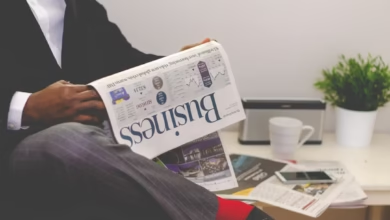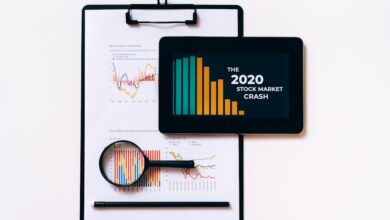Weathering the Economic Storm: A Comprehensive Guide to Recessions, Their Impact, and Strategies for Resilience

As economies around the world face increasing uncertainty, the specter of recession looms larger than ever. Understanding the early warning signs of an economic downturn is crucial for businesses, investors, and consumers alike. Recessions can ripple through various sectors, impacting everything from employment rates to consumer spending, while necessitating strategic responses from both individuals and governments. In this article, we will explore the critical indicators that signal a recession, examine how different sectors are affected, and discuss effective investment strategies during turbulent times. We will also delve into the role of government stimulus in mitigating the effects of economic downturns, the shifts in consumer behavior that often accompany recessions, and the implications for global trade and supply chains. Drawing lessons from past recessions, we will highlight the importance of preparedness and resilience for businesses navigating these challenging waters. Join us as we unravel the complexities of economic downturns and equip ourselves with the knowledge to not only survive but thrive during these testing times.
- 1. "Recognizing the Red Flags: Early Warning Signs of an Economic Recession"
- 2. "Navigating the Storm: Sector-Specific Impacts of Recessions and Investment Strategies"
- 3. "Government Interventions and Consumer Shifts: Understanding the Dynamics of Economic Downturns"
1. "Recognizing the Red Flags: Early Warning Signs of an Economic Recession"
Economic recessions often unfold gradually, and recognizing early warning signs can be crucial for individuals and businesses alike. Several key indicators may signal an impending recession, allowing stakeholders to take proactive measures.
One of the most commonly observed early signs is a decline in consumer confidence. When consumers become apprehensive about their financial future, they tend to reduce spending, which can lead to decreased demand for goods and services. This shift can be tracked through consumer sentiment surveys and retail sales data.
Another significant indicator is rising unemployment rates. An increase in job losses often precedes a recession as companies begin to cut back on hiring or lay off employees in response to declining sales. Monitoring labor market trends, such as jobless claims and payroll reports, can provide insights into the health of the economy.
Additionally, changes in manufacturing output can serve as a warning. A decrease in production levels, as indicated by metrics like the Purchasing Managers' Index (PMI), often reflects declining business activity and can signal that companies are bracing for a downturn.
Interest rates also play a critical role; an inversion of the yield curve, where short-term interest rates exceed long-term rates, has historically been a reliable predictor of recessions. This phenomenon indicates that investors may expect slower economic growth in the future, prompting them to seek safer, long-term investments.
Furthermore, fluctuations in stock market performance can indicate shifting economic sentiments. A sustained decline in stock prices may signal investor concerns about corporate earnings and overall economic conditions, which can foreshadow a recession.
Finally, external shocks—such as geopolitical tensions, natural disasters, or global pandemics—can disrupt economic stability and trigger a recession. Monitoring these global events can help in assessing potential risks to the economy.
Recognizing these red flags early can empower consumers, businesses, and policymakers to respond strategically, mitigating the adverse effects of a recession before it fully materializes.
2. "Navigating the Storm: Sector-Specific Impacts of Recessions and Investment Strategies"
Recessions have varying impacts across different sectors of the economy, influencing performance and investment opportunities. Historically, essential services such as healthcare and utilities tend to remain stable during economic downturns, as demand for these services does not significantly fluctuate regardless of economic conditions. This resilience makes them attractive options for investors seeking to weather the storm.
Conversely, cyclical sectors like consumer discretionary, travel, and luxury goods often bear the brunt of a recession. As consumers tighten their budgets, spending on non-essential items declines, leading to decreased revenues for companies within these industries. Investors may consider reallocating their portfolios away from these sectors during economic downturns, focusing instead on defensive stocks that can provide stability.
Another sector to assess is technology, which can experience mixed outcomes. While some tech companies may face reduced spending from businesses and consumers, others, particularly those in cloud services and remote work solutions, may thrive as organizations adapt to new operational realities. Investors should identify firms with strong fundamentals and innovative products that can capitalize on changing consumer behaviors.
In terms of investment strategies, diversification becomes crucial during a recession. A well-balanced portfolio across different asset classes—such as bonds, commodities, and real estate—can mitigate risk. Additionally, considering value stocks over growth stocks may yield benefits, as value stocks tend to be more resilient during market downturns.
Furthermore, investors might explore opportunities in distressed assets. While this approach comes with inherent risks, purchasing undervalued stocks or real estate during a recession can lead to significant gains when the economy recovers.
Ultimately, understanding sector-specific impacts and adjusting investment strategies accordingly is key to navigating a recession. By focusing on resilient industries and maintaining a diversified portfolio, investors can better position themselves to withstand economic challenges while capitalizing on emerging opportunities.
3. "Government Interventions and Consumer Shifts: Understanding the Dynamics of Economic Downturns"
During economic downturns, government interventions and shifts in consumer behavior play crucial roles in shaping the landscape of recovery and resilience. Governments often respond to recessions with a variety of fiscal and monetary policies aimed at stabilizing the economy. These interventions can include lowering interest rates, increasing government spending, and implementing tax cuts or direct financial assistance to individuals and businesses. Such measures are designed to boost consumer confidence, stimulate demand, and ultimately encourage economic growth.
As government support flows into the economy, consumer behavior typically undergoes significant changes. In times of uncertainty, consumers tend to prioritize essential goods and services, leading to a shift in spending patterns. Discretionary spending often declines as households focus on necessities, such as food, healthcare, and housing. This shift can place additional strain on industries reliant on consumer spending, such as retail and hospitality, while benefiting sectors like healthcare and grocery.
Moreover, government interventions can also influence consumer sentiment and spending. For instance, direct payments to citizens can enhance disposable income, encouraging spending and mitigating the effects of a recession. Conversely, if consumers perceive government actions as insufficient or ineffective, confidence may further erode, leading to more cautious spending habits.
Understanding these dynamics is essential for both policymakers and businesses. Effective government interventions can help to stabilize the economy, while also addressing the evolving needs and behaviors of consumers during downturns. Businesses that can adapt to these changes—by realigning their offerings, enhancing customer engagement, and adjusting pricing strategies—are more likely to navigate the challenges posed by economic recessions and emerge stronger in the recovery phase.
In conclusion, understanding the multifaceted nature of economic recessions is essential for both individuals and businesses seeking to navigate these challenging times. By recognizing early warning signs and acknowledging the sector-specific impacts, investors can make informed decisions that mitigate risk and capitalize on opportunities. The role of government stimulus cannot be understated, as it serves as a critical tool to buffer the adverse effects of downturns and stimulate recovery. Additionally, shifts in consumer behavior during recessions highlight the need for businesses to adapt their strategies and remain agile in a changing marketplace.
The lessons learned from past recessions are invaluable, providing insights that are relevant in today's economic landscape. By implementing proactive measures—such as diversifying investments, optimizing operational efficiencies, and maintaining financial flexibility—businesses can better prepare for and survive potential downturns. Ultimately, while recessions present significant challenges, they also offer opportunities for growth and innovation for those who are willing to adapt and learn from history. As we move forward, staying informed and strategically positioned will be key to navigating the complexities of any economic landscape.





